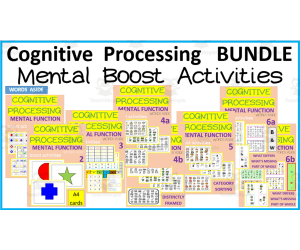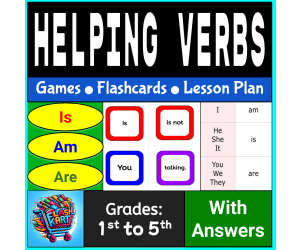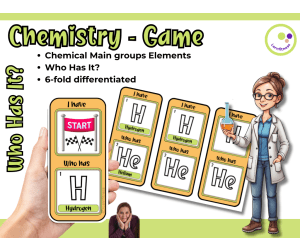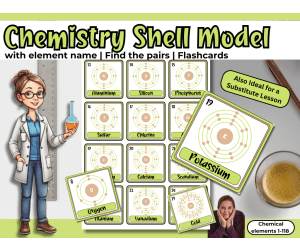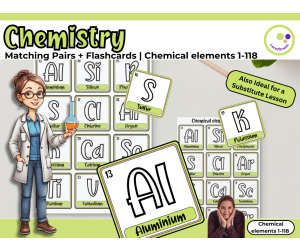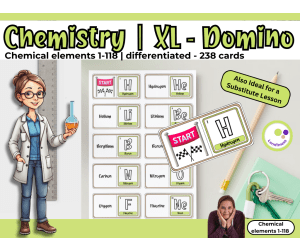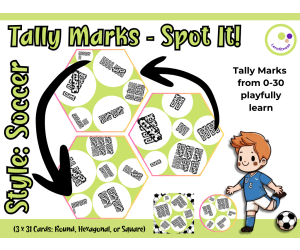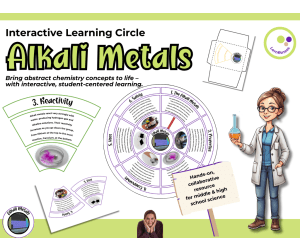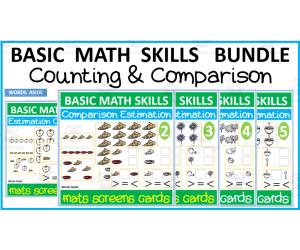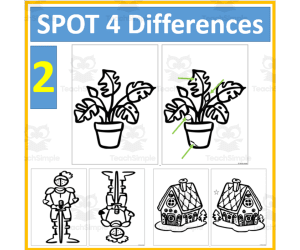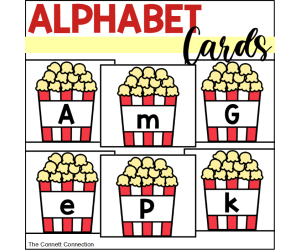2,616 products added recently
Flashcard Games
Turn study time into playtime with flashcard games that reinforce concepts across subjects. These activities promote friendly competition and collaboration. Incorporate them to make learning enjoyable and dynamic.
Cognitive Processing Mental Function Boost Activities BUNDLE
Special Resources, ELA, Special Education Needs (SEN), Speech Therapy, Life Skills, Language Development, Vocabulary, Kindergarten, Preschool, Grade 1, 2, Worksheets & Printables, Flashcards, Activities, Games
Cognitive Processing Mental Function Boost Activities BUNDLE This resource is invaluable for educators focusing on cognitive development, accommodating preschool through grade 2. It involves a vast array of activities designed to boost cognitive processes such as perception, working memory, attention and planning among others. This extensive resource includes six books: Book One: Contains detailed boards and cards that focus on identifying shapes and colors. Can be employed as laminated cards or cut-out worksheets for individual or group activities. Book Two: Offers over 100 A4-sized visual aids suitable for those needing larger visuals to practice psychomotor skills. Particularly supportive for learners with low vision or fine motor difficulties. Book Three: Emphasizes matching different visual elements based on color, symbolism and signs thus developing spatial understanding as well as enhancing the ability to follow instructions effectively. Book Four (two versions): Concept-oriented boards containing common category images like fruits, vegetables etc., encouraging categorization skills while improving recognition of semantic context through colored and black & white illustrations. Book Five: Involves classification tasks across various categories to reinforce grouping skills presented in both colored illustrations and black & white ones based on preference. Book Six (Color edition): Houses 'what is different', 'what is missing' activities plus understanding 'part-to-whole' relationships spanning across 120 pages/activities. These exercises are fantastic tools for vocabulary expansion along with comprehension abilities strengthening. The Cognitive Processing Mental Function Boost Activities BUNDLE offers diverse flexibility - whether it's employing these resources in classroom sessions; breaking them into smaller subsets during workshop-style lessons; assigning certain exercises independently at home or tailoring assignments based on student needs – these materials offer unlimited learning potential! This bundle translates cognitive function enhancement into a playful learning experience for budding young minds. The themes incorporated in this compilation are in direct correlation with key elements of Special Education Need (SEN), Speech Therapy, Life Skills, and Vocabulary curriculum domains. 669 pdf pages of boards, mats and cards for cognitive and visual perception skills.
Author WORDS ASIDE
Tags Cognitive Processing, Perception, Attention, Memory, Mental Skills, Centers, Boards, Mats, Occupational Therapy, Words Aside
Who Has It? – Chemical Elements Game (1–118) – 3 Levels of Differentia
STEM, Science, Chemistry, Physics, Life Sciences, Earth and Environmental Sciences, Basic Science, Special Resources, Social Emotional Learning (SEL), Special Education Needs (SEN), Homeschool Templates, Grade 6, 7, 8, 9, 10, 11, Activities, Games, Worksheets & Printables, Task Cards, Quizzes and Tests, Teacher Tools, Quizzes, Worksheets, Projects, Flashcards
Who Has It? – Chemical Elements Game (1–118) – 3 Levels of Differentiation A cooperative chemistry card game for grades 7–10 to review atomic numbers, element names, and symbols 🧪🎯 This resource is a classroom game that helps students become more confident with the chemical elements – from hydrogen to oganesson. The game follows the well-known “I have… who has?” format and is designed to reinforce students’ understanding of element names, symbols, and atomic numbers in a playful and interactive way. To support different learning levels, the material includes three differentiated versions of the full game, each with 118 element cards: With element names for both question and answer (beginner level) Only the “I have…” part includes the name , the question uses the symbol/number (intermediate level) Without element names – players must match based on symbol and atomic number alone (advanced level) Each version builds on the last and can be used flexibly depending on students' prior knowledge. The game works best with medium to large groups and encourages students to listen carefully, stay engaged, and support one another. What’s included: 3 full card sets (118 cards per set = 354 total) Differentiated by content and level of language support Clear instructions for printing, laminating, and use Ideal for individual, pair, or group work How I use it in class: I’ve played this game both at the end of a chemistry unit and as a fun opener when starting the periodic table. It’s also perfect for substitute lessons or for classes with mixed ability levels. Since each student needs to be ready when their card comes up, it fosters attention and collaboration. This is one of those games where learning happens almost by accident – students are so focused on playing that they internalize atomic numbers and symbols without even noticing. A simple, engaging way to bring structure, repetition, and movement into chemistry class – no extra prep needed. If you're looking for an easy way to help students become more confident with the periodic table, this might be worth trying in your classroom. Best, Heike from Lernfitness Did You Know? I teach with a certified therapy dog, and together we create a positive and welcoming learning environment. 🐶
Author Lernfitness
Rating
Tags Game, Educational Card Games, Chemistry, Physics, STEM Science Matching Game, Chemical Elements, Periodic Table Matching Game, Who Has It, STEM, Who Has It?
Helping Verbs Worksheets: Use of is, am, & are - Lesson Plan
ELA, Language Development, Grammar, ESL, Grade 1, 2, 3, 4, 5, Centers, Activities, Games, Flashcards, Worksheets & Printables, Worksheets
Helping Verbs: is, am, & are Lesson Plan, Worksheets, Flashcards, and Fun Games Do your students mix up "is," "am," and "are"? It's a tricky spot for young students and English learners! This resource gives you everything you need to teach these 'Helping Verbs' easily. It makes learning hands-on and fun for kids in early grades or in ESL/EFL classrooms. Are you tired of correcting "He am going" or "They is sad"? This resource will help you a lot to fix this mistake and help your students learn a lot about the helping verbs. Your students will master the verb "to be" easily with the help of this resource. Teaching grammar is one of the biggest challenges in early elementary grades and ESL classes (Beginner level)! I designed this all in one lesson plan to make the confusing world of is, am, and are fun, hands-on, and memorable. This resource is perfect for early learners, ESL/EFL students, and anyone who needs to solidify their grammar foundations. This resource has everything you need to teach, practice, and assess this vital skill - all just a download away. What’s included in this resource? A clear and ready to use lesson plan that explains how to teach is, am, and are in both affirmative and negative forms (is not, am not, are not). Printable flashcards to support visual learners and make their practice more interactive. Anchor charts - you can hang these in your classroom, or pin them to a bulletin board, or add these to student binders for quick reminders. Example sentences related to these verbs. Worksheets with answer keys for guided work, independent practice, or review. Classroom game ideas that get students moving and learning at the same time. Homework and assessment suggestions to reinforce the lesson beyond class time. Resource features: A simple yet structured lesson plan with clear objectives and step by step teaching ideas. Bright and vibrant flashcards that help students remember the correct verb forms. A fun game idea that makes grammar practice feel like play instead of work. Answer keys for quick checking and stress-free grading. This pack is perfect for ESL/EFL lessons, ELA classrooms, tutoring sessions, and early literacy support. How to use this resource? Start the lesson with the anchor charts to introduce the helping verbs. Follow the lesson plan to model the concept and guide students through practice. Use flashcards for partner activities, whole class games, or warm-ups. Encourage students to talk, move, and build sentences using is, am, and are . Finish with the worksheets or assign them as homework for extra reinforcement. How it is useful for teachers and students? This pack will save their planning time while still giving learners a meaningful and hands-on experience. The visuals, examples, worksheets, and games will help students understand grammar naturally. This resource is well suited for early grades, ESL groups, intervention sessions, or quick grammar refreshers. Students will enjoy the mix of activities. Teachers may love seeing their confidence grow. English Grammar, Helping Verbs, Verb To Be, Is Am Are, Affirmative and Negative Sentences, Grammar Worksheets, Lesson Plan, Flashcards, Classroom Games, Anchor Charts, ESL, EFL, ELA, ELL, Interactive Learning, Visual Aids, Grammar Practice, Early Literacy, Printable Resources, Teacher Materials
Author FlashKart
Rating
Tags Grammar, Language Arts, Helping Verbs, Flashcards, Esl, Efl, Basic Grammar Skills, Games, Worksheets, Elementary
Who Has It? – Main Group Elements Game - 6 Levels of Differentiation
STEM, Science, Chemistry, Physics, Life Sciences, Earth and Environmental Sciences, Basic Science, Special Resources, Social Emotional Learning (SEL), Special Education Needs (SEN), Homeschool Templates, Grade 6, 7, 8, 9, 10, 11, Activities, Games, Worksheets & Printables, Task Cards, Quizzes and Tests, Teacher Tools, Quizzes, Worksheets, Projects, Flashcards
Who Has It? – Main Group Elements Game (6 Levels of Differentiation) A chemistry card game to review the main group elements in a structured and playful way (Grades 7–10) 🧪🎯 This classroom game is based on the “I have… who has?” format and helps students review the main group elements of the periodic table. It focuses on atomic numbers, element symbols, and – depending on the level – the correct element names. The game format encourages full-class participation, supports recall through repetition, and helps even quieter students get involved in a low-pressure way. The special feature: six levels of differentiation , so you can tailor the material to your students’ abilities. Whether you teach a mixed-level group or want to build in progression over time, these sets offer plenty of flexibility. What’s included: 3 card sets × 2 difficulty paths = 6 levels total Each set contains 52 cards (156 cards total) Elements included: all main group elements up to element 118 Levels range from fully labeled to no element names at all Clear instructions for printing, cutting, and gameplay Differentiation overview: Levels 1 & 2: All names included Levels 3 & 4: Only “I have” part includes names Levels 5 & 6: No names – only symbols and atomic numbers How to use in class: In my own lessons, I’ve used this as a review after teaching atomic structure or periodic trends. It works well as a class opener, during stations, or even in a substitute lesson. The A/B sets are helpful when students sit close together – it prevents copying but keeps everyone working on the same task. Students enjoy the rhythm of the game, and because every card depends on the one before, they naturally stay attentive. It’s a great way to combine repetition with interaction. Low-prep, flexible, and genuinely useful for learning chemical elements in a collaborative setting. Best, Heike from Lernfitness Did You Know? I teach with a certified therapy dog, and together we create a positive and welcoming learning environment. 🐶
Author Lernfitness
Rating
Tags Game, Educational Card Games, Chemistry, Physics, STEM Science Matching Game, Chemical Elements, Periodic Table Matching Game, Who Has It, STEM, Main Groups
Shell Model – Chemical Elements Flashcards - Element names
STEM, Science, Chemistry, Physics, Life Sciences, Grade 7, 8, 9, 10, 11, 12, Activities, Games, Worksheets & Printables, Task Cards, Quizzes and Tests, Teacher Tools, Word Problems, Word Searches, Worksheets, Flashcards
Shell Model – Chemical Elements Flashcards 118 cards for learning the periodic table Learn atomic structure and the periodic table through play and visual learning 🧪🧠 These flashcards are designed to help students explore the structure of atoms using the shell model. Covering all 118 elements of the periodic table, each card includes the atomic number, element name, symbol, and a visual representation of the electron arrangement in shells. It’s a simple but effective tool for bringing abstract chemistry content into a more visual and interactive format. I’ve used this set in grades 7–10, both in introductory lessons and for revision. What worked especially well was printing the cards twice and using them as a memory game (“Find the Pairs”). Students match element names with their shell models or symbols – and along the way, they start to notice patterns: which elements belong to the same group, how many electrons fit in each shell, and what the outer shells can tell us about chemical reactivity. What’s included: 118 printable flashcards (PDF) – one for each element Each card features: atomic number, element name, chemical symbol, and shell model Suggestions for classroom use (games, sorting tasks, self-study) The cards can be used in a variety of ways: – As a memory game (matching name and shell model) – For group sorting activities (by group, period, metal/non-metal, etc.) – As quick quizzes in pair work – Or as visual aids when introducing atomic theory They’re suitable for different levels of difficulty. Beginners can focus on names and symbols, while more advanced students work with the shell diagrams and explain electron configurations. It’s also a helpful tool for differentiation – everyone works at their own pace, but with the same visual material. This resource comes as a PDF and is easy to print and prepare. Laminating the cards is a good idea if you plan to use them more than once. 📍 Best wishes, Heike from @Lernfitness Did You Know? I teach with a certified therapy dog, and together we create a positive and welcoming learning environment. 🐶
Author Lernfitness
Rating
Tags Educational Card Games, Chemistry, Physics, STEM Science Matching Game, Chemical Elements, Periodic Table Matching Game, Flashcards Chemical Elements, Element Names, Shell Model, Game
Chemical Elements – Matching Pairs Game & Flashcards (1–118)
STEM, Science, Chemistry, Physics, Life Sciences, Montessori, Basic Science, Grade 7, 8, 9, 10, 11, 12, Activities, Games, Worksheets & Printables, Task Cards, Teacher Tools, Flashcards, Classroom Decor, Door Decor, Bulletin Boards, Posters
Chemical Elements – Matching Pairs Game & Flashcards (1–118) 118 cards for learning the periodic table A visual and interactive way to explore the periodic table 🧪🧠 This printable card set includes all 118 chemical elements and can be used either as a classic memory game or as flashcards for independent practice. Each card features the element’s symbol, atomic number, and name – providing a clear and accessible entry point into the world of chemistry. The cards are designed to be used flexibly. You can print them twice to play Matching Pairs (also known as Memory®), where students turn over cards and try to find identical pairs. This helps improve concentration and recall while reinforcing students’ familiarity with element symbols and atomic numbers. What’s included: 118 cards (PDF format) – one for each chemical element Each card includes: element symbol, name, and atomic number Use them as a memory game (print twice) or flashcards for review Black-and-white format allows for optional color coding (e.g. element groups or states of matter) In my classroom: I’ve used this resource with grades 7–10, both during our unit on the periodic table and as a review activity. Some groups like to sort the cards by group or period before playing. Others enjoy using them competitively, seeing who can name the most elements based on symbol alone. There’s also room for differentiation: stronger students can work without a periodic table for support, while others use it alongside. The black-and-white version is copy-friendly and works well if you want students to color-code elements (e.g. metals vs. non-metals). You can also adapt the game for faster learners by having them group elements or research additional properties. This is a low-prep activity you can use again and again – whether as a center activity, partner task, or quick review before a test. Just print, cut, and play. 📍 Best wishes, Heike from @Lernfitness Did You Know? I teach with a certified therapy dog, and together we create a positive and welcoming learning environment. 🐶
Author Lernfitness
Rating
Tags Educational Card Games, Chemistry, Physics, STEM Science Matching Game, Chemical Elements, Periodic Table Matching Game, Game, Memory, Matching Pairs, Flashcards
Action Verb Flashcards for Preschool, Kindergarten, Montessori & 1st
ELA, Language Development, Grammar, Vocabulary, Preschool, Kindergarten, Grade 1, Centers, Activities, Games, Worksheets & Printables, Flashcards
30+ Action Verb Flashcards for Preschool, Kindergarten, Montessori, and ESL/EFL Learners Get your little learners moving and learning with this bright and engaging set of Action Verb Flashcards ! These flashcards are perfect for preschool , kindergarten , and early language learners . These cards introduce common verbs like jump , run , eat , and walk through fun, hands-on activities . I designed these to help children connect words with movement while building listening and language skills . Whether you’re teaching in the classroom, during circle time, or at home, this resource makes learning action verbs exciting and interactive. What’s Included: 30+ Action Verb Flashcards (e.g., jump, run, eat, walk, and more) 3 Simple Activity Ideas for preschool and kindergarten Simon Says Game (with 14 printable game cards) Circle Time Game for active participation Sample Question and Answer Game to encourage speaking and listening Why Teachers Love It: Helps children recognize and use common action verbs Encourages movement-based learning and active play Builds vocabulary , listening , and speaking skills Easy to follow directions included Designed with a clean white background for easy printing Great for ESL, EFL, and ELL students - especially those developing speech in bilingual or multilingual environments How to Use: Start by showing the flashcards and modeling each action word. Encourage students to repeat and act out each verb. Then, use the Simon Says and Circle Time games to turn practice into play! These games help kids strengthen listening skills and comprehension while having fun. This resource works beautifully in preschool and kindergarten classrooms, speech therapy sessions , or at home for extra practice . Bring language learning to life with activities that make your students move, laugh, and learn all at once! Action Verbs Verb Flashcards Kindergarten Activities Preschool Learning ESL/EFL/ELL Movement-Based Learning Early Language Development Simon Says Game Listening Skills Classroom Games Speech Development Vocabulary Building Language Arts Teacher Resources
Author FlashKart
Rating
Tags Verbs, Grammar, Action Verbs, Simon Says Game, Kindergarten Fun, First Grade ELA, Language Arts, Vocabulary, Verb Games, Circle Time
PETS IN ENGLISH | 10 Free Posters in English
Language Development, ELA, Vocabulary, Pre-Reading, Phonics, Animals, Life Sciences, Science, Early Learning, Elementary, Homeschool Resources, Not Grade Specific, Pre-K, Flashcards, Worksheets & Printables, Door Decor, Classroom Decor, Posters, Games, Activities
PETS IN ENGLISH | 10 Free Posters in English THIS RESOURCE HAVE POSTERS WITH THE NAME OF THE BASIC PETS. INTRODUCTION: Thank you for choosing EDITORIAL ARENAS EDUCATIVAS! Our mission is to deliver a variety of learning resources that make education enjoyable and effective for children. Don't forget to visit our store to explore products for reading, writing, math, and Spanish language skills. MAIN DESCRIPTION OF THIS RESOURCE: 1) How can this material support children's learning or development? This material will help our students learn in an educational way. It will support your students by guiding them in a much more playful way to achieve easy and rapid learning. 2) What specific skills are developed using this resource? Students will be able to develop their attention, concentration, creativity, and imagination skills. It will also allow students to develop their cognitive skills such as comprehension, analysis, and others. 3) Who is the ideal audience for this document? This document and/or teaching resource is primarily intended for young students, meaning those between the ages of 5 and 12, in other words, students in early childhood and/or primary education. However, it can also be used by the general public if required. 4) What recommendations are there for making the most of this resource? To make the most of this resource, I recommend first analyzing it, then looking at the specific topic your student needs to learn and assess whether my resource addresses it. I also ask you to consider how you will print it. SECONDARY AND COMPLEMENTARY INFORMATION: 1) Does this material allow for custom editing? This educational document is available in PDF format, so you cannot edit it. You simply need to download and then print it. 2) What main topic does the resource cover? This document has been developed to address a basic topic that children in kindergarten through elementary school should master. This document will also be helpful to the general public who want to learn. 3) What version does this document correspond to? This educational resource is designed in PDF format, which will make your download experience much simpler and easier to use.
Author EDITORIAL LAURA EDUCA
Rating
Tags FREE, FREE RESOURCES, ANIMALS, POSTERS, BANNERS, TOPS RESOURCES, VOCABULARY, FLASHCARDS
Yoga Poses for Kids Cards - Deck One
P.E. & Health, Social Emotional Learning (SEL), Special Resources, Grade 1, 2, 3, Games, Activities, Flashcards, Worksheets & Printables
Brand-New Design for 2025! Discover the joy of yoga with 25 fun, easy-to-follow poses for kids! These colorful, engaging cards are perfect for: Brain breaks in the classroom Calm corners or transitions Full kids yoga classes or quick movement activities at home What’s Inside the Deck: 25 yoga pose cards 25 matching illustrated keyword cards 25 description cards 25 pose + keyword illustration 4 fun themes: Travel, Earth, People, and Animals Pose index and teaching tips Why You’ll Love It: Kid-Friendly Design: Bright, clear illustrations make it easy for children ages 3+ to follow along. Versatile Uses: Perfect for teachers, parents, and kids yoga instructors. Ideal for both beginners and experienced yogis. Encourages Creativity: Use the cards to create imaginative stories or sequences. Multicultural Representation: Features diverse yogi kids from seven countries. Customer Favorite: "I used the yoga cards yesterday with my PK class. I used them like flashcards and held each one up to see if they could name the pose. Almost all of my kids knew the names and poses, plus we counted to see how many we had learned and there were 45! We were all amazed and then picked our favorite poses to do. It was a wonderful learning opportunity."-Stephanie Give the gift of movement, mindfulness, and fun. Perfect for kids, teachers, and parents alike! Ages 3+. For tips on using the cards, check out our guide: "How to Play with Yoga Cards for Kids." Makes a wonderful gift for the teachers, parents, friends, and children in your life. Fun for all ages. 3 years+
Author Kids Yoga Stories
Tags Kids Yoga, Yoga Poses, Classroom Yoga, Matching
Beginning and Final Blends Flashcards
ELA, Phonics, Language Development, Pre-Reading, Special Education Needs (SEN), Special Resources, Grade 1, Flashcards, Worksheets & Printables, Games, Activities
Beginning and Final Blends Flashcards with pictures A set of beginning and final blends with both letters and matching pictures. This set covers the following beginning blends: sw, sk, st, sp, sl, sn, sm, bl, be, cl, cr, dr, fr, fl, gr, gl, pl, pr, tr, tw And the following final blends: ft, lk, nd , nt, mp, st, lt, sk, nk This set of consonant blends flashcards contains the blends a child will most likely need for their current reading/spelling level, if they are just learning to hear four sounds in a word with a short vowel sound. Once a child meets more advanced vocabulary, the child’s ability to decode will be such that they will no longer need consonant blends flashcards - the skill will be more or less automatic. A child does not need to know every consonant blend by heart. What is needed is the ability to hear the two sounds in a blend to spell and to blend two consonants to read. Phonemic awareness of the blends is a good place to start. How to use the Beginning and Final Blends Flashcards with pictures: ·If you print the letters and their matching pictures back to back, you will have a set of self-correcting cards with which a child can practice reading the consonant blends. ·If you print the letters and pictures separately, then you can let the child match letters to pictures, selecting just as many as the child can cope with, at a given time. For some children, learning the consonant blends is not an easy skill, so it may be advisable, once the child has an idea of what is needed, to move on to the next skill, as there will be plenty of opportunities to practice the blends as the child progresses through a phonic programme.
Author Lilibette's Resources
Rating
Tags Beginning Blends, Final Blends, Consonant Blends, Flashcards With Pictures, Flashcards, Phonic Flashcards
XL Domino – Chemical Elements 1–118 | exploring element names + symbol
STEM, Science, Chemistry, Physics, Life Sciences, Montessori, Basic Science, Grade 7, 8, 9, 10, 11, 12, Activities, Games, Worksheets & Printables, Task Cards, Quizzes and Tests, Teacher Tools, Word Problems, Flashcards, Escape Room, Experiments
XL Domino – Chemical Elements 1–118 An interactive domino game for exploring element names and symbols 🧪🎲 This printable XL domino game offers a fun and flexible way for students to practice the names and symbols of all 118 chemical elements. Designed for use in grades 7–10, this resource supports both introductory lessons and ongoing review in chemistry class. Whether used in small groups, as a full-class activity, or even spread out along the hallway floor, it encourages active learning and collaboration. Each card features either the name or the symbol of a chemical element. By matching these correctly, students build a long domino chain – all while reinforcing their knowledge of atomic numbers, symbols, and the layout of the periodic table. What’s included: 238 printable domino cards (PDF format) Two complete versions of the game (119 cards each): – Beginner version: element names on both sides – Advanced version: name on one side, symbol on the other Covers all elements from hydrogen (1) to oganesson (118) Tips for setup and gameplay included How I’ve used it: This game works well before introducing the periodic table in depth. It gives students time to get comfortable with element names and symbols in a low-pressure setting. The larger card format makes it ideal for group work or movement-based activities, such as arranging the cards on the floor or in the hallway. Why it works: The visual repetition and active gameplay help students internalize key facts more effectively than passive memorization. Group dynamics also support peer learning – students naturally help each other recall unfamiliar elements. And because it feels like a game, students stay engaged longer and show more willingness to participate. The material is easy to prepare: print, laminate if you like, and cut out the cards. From there, you can adapt it for differentiated learning levels or turn it into a competitive classroom challenge. This is not just a game – it’s a versatile teaching tool that brings the periodic table to life. 📍 Best wishes, Heike from @Lernfitness Did You Know? I teach with a certified therapy dog, and together we create a positive and welcoming learning environment. 🐶
Author Lernfitness
Rating
Tags Educational Card Games, Chemistry, Physics, STEM Science Matching Game, Chemical Elements, Periodic Table Matching Game, Game, Domino, Differentiation
Tally Marks Game – Learning to Count with a Soccer Twist
Montessori, Math, Numbers, Early Math, Counting, Algebra, Decimals, Science, STEM, Special Resources, Preschool, Grade 1, 2, 3, 4, 5, 6, Activities, Games, Worksheets & Printables, Task Cards, Quizzes and Tests, Teacher Tools, Quizzes, Projects, Flashcards
Tally Marks Game – Learning to Count with a Soccer Twist Similar to Dobble / Spot it! A hands-on matching game for grades 1–6 (PDF – Dobble / Spot It! style) ⚽📊 This resource is a playful way to help students practice tally marks while staying active and engaged. The game is based on the popular “Find the Twin” concept (similar to Dobble or Spot It!) and helps children recognize and count tally lines quickly and confidently. Each card shows six symbols – including different tally mark patterns – and players have to find the matching pair between any two cards. The game encourages concentration, quick visual comparison, and number recognition, all while reinforcing how tally marks work. What’s included: 93 cards total → 3 full sets with 31 cards each 3 versions: → round cards → cut-friendly square cards → hexagonal cards All with clear, child-friendly visuals Instructions for flexible classroom use How I’ve used it in class: I like to use this game in small math stations or as a warm-up activity. It’s also a favorite for early finishers or during quieter times when a bit of movement and interaction is helpful. You can laminate the cards for long-term use, or simply print them on heavier paper. The game works in pairs or small groups – and students pick up the rules quickly. Beyond basic counting, the game helps introduce how we group numbers for clarity, which is a useful step toward early data handling and bar graphs. And the sporty theme adds just the right amount of energy. Print, cut, and play – no prep needed, and lots of learning packed into a simple activity. Warm regards, Lernfitness Did You Know? I teach with a certified therapy dog, and together we focus on creating a positive and inspiring learning environment.
Author Lernfitness
Rating
Tags Math, Foreign Languages, Game, Spot It, Educational Card Games, Visual Math Activity, Find The Match, Tally Marks, Tally Charts
Zoo Alphabet Cards
ELA, Language Development, Pre-Reading, Kindergarten, Preschool, Activities, Flashcards, Worksheets & Printables, Games
These zoo themed alphabet cards are perfect for students who are learning with an animal theme. They make the perfect tool for students to learn the letters of the alphabet. What is Included: This set includes one capital letter card and one lowercase letter card for each letter. Ways to Use the Cards: Play a matching game by matching the capital letters to the lowercase letters. Attach a paper clip to a letter card and use a magnetic fishing pole to "catch" the letters for a fun fishing game. Use a sand or salt tray for students to practice writing the letters on each card. Have students find the letters that you have hidden around the room for a fun letter hunt. Place the letter cards in alphabetical order. Create a pocket char game where you place the cards on a pocket chart and hide a picture behind one of the letters. The students will guess which letter the hidden picture is behind. Add objects that begin with each letter for students to match to each letter card. When to Use: Literacy Center - Place the cards in a literacy center for students to match independently or with a partner. Morning Tubs or Baskets - Place the cards in a morning bin for students to work on while their classmates arrive to class. Small Group Activities - The teacher can pull aside a small group of students who need extra practice identifying letters to use these cards. These zoo alphabet cards are a great activity for students to practice letter recognition. They are a low prep activity for teachers to prepare for students. Simply print, cut apart and laminate for durability. These cards can be stored in a task box for easy set up, clean up, and storage. Skills Assessed: These cards, depending on the materials added, can assess both letter recognition of capital and lowercase letters as well as identifying beginning sounds.
Author The Connett Connection
Rating
Tags Alphabet Activities, Letter Recognition, Alphabet Games, Alphabet Cards
CAPYBARA ADDITION | 20 FREE EXERCISES
Math, Addition, Addition and Subtraction, Early Learning, Elementary, Homeschool Resources, Not Grade Specific, Pre-K, Flashcards, Worksheets & Printables, Workbooks, Worksheets, Activities, Games, Escape Room
CAPYBARA ADDITION | 20 FREE EXERCISES THIS RESOURCE HAVE 20 FLASHCARDS WITH EXERCISES OF 1-DIGIT ADDITION MADE WITH CAPYBARA THEMED. INTRODUCTION: Welcome to EDITORIAL ARENAS EDUCATIVAS! We specialize in producing diverse educational tools to support children's learning journeys. Be sure to browse our store for reading, writing, math, and Spanish resources designed to make learning fun and impactful. MAIN INFORMATION OF THIS MATH RESOURCE: 1) What educational standards were used as the basis for creating this material? This document was not developed based on any specific standard. 2) Who is the creator of this resource and how should it be cited? The creator of this document is EDITORIAL ARENAS EDUCATIVAS. 3) Is this resource available for free or does it require a purchase? Because we vocationally work for the education of thousands of students, we are offering this document for free. 4) This resource is for individual use only; what restrictions apply to its redistribution or sale? We ask that you share our link so more people can download our resource or recommend our store. It would help us greatly. SECONDARY AND COMPLEMENTARY INFORMATION: 1) What version does this document correspond to? This educational resource is designed in PDF format, which will make your download experience much simpler and easier to use. 2) Is the material designed in color or black and white? This document has been designed in color (if required) or is sometimes created in black and white to make your learning experience easier. 3) What age range is appropriate for this resource? Our publishing company is dedicated to creating resources for young children between the ages of 3 and 12, as well as for older students or anyone who needs them. 4) What keywords best describe this resource? We can tag this product with keywords such as: teaching resource, resources, materials, teaching materials, worksheets, educational worksheets, worksheets for children.
Author EDITORIAL LAURA EDUCA
Rating
Tags FREE, FREE RESOURCES, ADDITION, MATH, MATH RESOURCES, CAPYBARA, ADDITION AND SUBTRACTION
Visual Sequencing Cards BUNDLE
Special Resources, ELA, Special Education Needs (SEN), Speech Therapy, Math, Early Math, Language Development, Pre-Reading, Kindergarten, Preschool, Grade 1, Worksheets & Printables, Flashcards, Activities, Games
Visual Sequencing Cards BUNDLE Welcome to the world of the Visual Sequencing Cards BUNDLE. This comprehensive teaching resource is specially designed for educators seeking effective tools for enhancing visual reasoning skills among their students. The bundle, featuring three distinct books, delivers varied patterns and sequences that promote attention skills, short-term or working memory, and reasoning capabilities. About Each Book: 'Reveal an Image': A 20-page resource filled with image revealing sequencing cards. In this book, each sequence progresses by adding an extra part to the initial image across four steps. These captivating visuals double up as matched sample materials when printed twice or as coloring material. 'One Shape Added': This volume comes with a set of 30 shape sequencing cards spread over individual pages. Every subsequent step adds one more shape to the previous figure used in the sequence. '10 Step Stories': This offering brings stories alive using robots, monsters and dinosaurs-themed visuals spread out in 10-step sequences that encourage language development alongside fostering visual reasoning practice. Compiled into three straightforward PDF files summing up to plentiful 87 pages overall; these resources cater subtly different learning needs manifesting their potential across multiple settings including one-on-one therapy sessions as well as small group workshops beyond day-to-day classroom teachings. Suitability & Usage: Applicable from early learning stages through kindergarten up until grade one; these resources do not limit themselves just within Math & Language Art confines but extends generously towards special education needs from speech therapy to early math essentials while providing pre-reading aids making it an invaluable asset inside any contemporary teacher's toolbox. In conclusion, get your hands on this Visual Sequencing Cards BUNDLE and help unfold the endless array of learning experiences for your young learners! 3 pdf files with cards for visual reasoning, with images, shapes and stories . 87 pages total .
Author WORDS ASIDE
Tags Visual Sequencing, Short-term Memory, Language Development, Reasoning Skills, Attention, Autism, Concentration, Centers, Stations, Words Aside
Alkali Metals Concept Wheel – Interactive Chemistry Activity for Grade
STEM, Science, Chemistry, Physics, Life Sciences, Grade 7, 8, 9, 10, 11, 12, Activities, Games, Worksheets & Printables, Quizzes and Tests, Teacher Tools, Worksheets, Flashcards, Projects, Presentations, Graphic Organizers
Alkali Metals Concept Wheel – Interactive Chemistry Activity for Grades 7–10 Learn Alkali Metals - visual learning 🧪🧠 This concept wheel is a practical way to help students understand the alkali metals in Group 1 of the periodic table. I first made it for a grade 8 class that was struggling with the idea of chemical families. Instead of giving them another chart to copy, I tried this wheel activity, and it worked much better because they could see and handle the information piece by piece. The wheel has eight sections that cover the basics: general properties, reactivity, how these elements appear in nature, and some everyday uses. Students cut out and arrange the pieces to build the full circle. The activity takes a little bit of preparation, but once the pieces are made, you can reuse them. I usually store the sets in small envelopes so they are ready for the next lesson. There are different versions included. Some circles are already filled in, which is helpful when introducing the topic for the first time. Others are blank, so students can write their own notes after a lab or reading assignment. I have used the blank ones during review sessions, and students liked comparing their wheels with a partner’s version. It also gives them a sense of ownership over the material. The wheel can be used in many ways: as a warm-up before a lab, as practice during a unit on the periodic table, or as a review before a quiz. It works for group tasks, but I have also had students complete it on their own. When the wheels are finished, they make a clear visual display for the classroom or for a student’s notebook. This activity is designed for grades 7–10 chemistry or physical science. It supports lessons on periodic trends, classification of elements, and the special role of the alkali metals. 📍 Best wishes, Heike from @Lernfitness Did You Know? I teach with a certified therapy dog, and together we create a positive and welcoming learning environment. 🐶
Author Lernfitness
Rating
Tags Educational Card Games, Chemistry, Physics, STEM Science Matching Game, Chemical Elements, Periodic Table Matching Game, Alkali Metals, Periodic Table, Learning Circle
Fruit Alphabet Cards
ELA, Language Development, Pre-Reading, Kindergarten, Preschool, Activities, Flashcards, Worksheets & Printables, Games
These fruit themed alphabet cards are perfect for students who are learning in the about fruit. They make the perfect tool for students to learn the letters of the alphabet. What is Included: This set includes one capital letter card and one lowercase letter card for each letter. Ways to Use the Cards: Play a matching game by matching the capital letters to the lowercase letters. Attach a paper clip to a letter card and use a magnetic fishing pole to "catch" the letters for a fun fishing game. Use a sand or salt tray for students to practice writing the letters on each card. Have students find the letters that you have hidden around the room for a fun letter hunt. Place the letter cards in alphabetical order. Create a pocket char game where you place the cards on a pocket chart and hide a picture behind one of the letters. The students will guess which letter the hidden picture is behind. Add objects that begin with each letter for students to match to each letter card. When to Use: Literacy Center - Place the cards in a literacy center for students to match independently or with a partner. Morning Tubs or Baskets - Place the cards in a morning bin for students to work on while their classmates arrive to class. Small Group Activities - The teacher can pull aside a small group of students who need extra practice identifying letters to use these cards. These fruit alphabet cards are a great activity for students to practice letter recognition during the spring months. They are a low prep activity for teachers to prepare for students. Simply print, cut apart and laminate for durability. These cards can be stored in a task box for easy set up, clean up, and storage. Skills Assessed: These cards, depending on the materials added, can assess both letter recognition of capital and lowercase letters as well as identifying beginning sounds.
Author The Connett Connection
Tags Alphabet Activities, Letter Recognition, Alphabet Games, Alphabet Cards
Basic Math PIctorial Manipulatives BUNDLE
Special Resources, Special Education Needs (SEN), Math, Early Math, Addition and Subtraction, Addition, Numbers, Place Value, Kindergarten, Preschool, Grade 1, 2, Worksheets & Printables, Flashcards, Activities, Games, Worksheets
Basic Math Pictorial Manipulatives BUNDLE . The Basic Math Pictorial Manipulatives BUNDLE is a fun, engaging, practical and creative teaching resource for educators catering to preschool students, kindergarteners, and those in grades 1 and 2 . This bundle of pdf files provide learners with a hands - on approach to grasping fundamental math concepts . Features : Addition Pairs to 10 | Shark Mats: Designed for teachers, these mats depict basic addition operations visually with a focus on number pairs that sum up to ten . They can be transformed into digital screen slides for classroom or distance learning application . Number Quantity Math Cubes | 1 - 10 : This component aims to reinforce the correlation between numbers and quantities . With ten different colors across one hundred pages, this section also acts as an excellent visualization tool for small numbers word problem solving or task card creation assignments . Counting Ones and Tens | Math Vocabulary Worksheets : Focussing on counting skills along with essential mathematical terminologies knowledge like 'more,' 'less,' ‘divide,’ amongst others is covered here through activity - based worksheets playfully associated say like math mouths ready to devour ones & tens . Applicability : This instructional resource comprising of three informative PDF books over 214 pages can be used in various educational settings such as whole groups, small groups, individual home practice sessions along with structured homeschooling environments or special education needs ( SEN ) . In Conclusion, The Basic Math Pictorial Manipulative BUNDLE has ample potential to redefine how young learners perceive fundamental mathematical concepts given its diverse teaching strategies relevance . 3 PDF books with pictorial math basic materials . 214 pages total . If you are further interested in finding more resources like this, that are immediately available to dowload and use, then check out my store by clicking HERE .
Author WORDS ASIDE
Tags Math Manipulatives, Visual Learning, Basic Math Concepts, Counting, Math Cubes, Group Work, Pictorial, Manipulatives, Centers, Words Aside
Basic Math Skills | Counting Estimation Comparison BUNDLE
Special Resources, Special Education Needs (SEN), Math, Early Math, Addition and Subtraction, Addition, Numbers, Place Value, Preschool, Grade 1, Teacher Tools, Lesson Plans, Worksheets & Printables, Flashcards, Activities, Games
Basic Math Skills | Counting Estimation Comparison BUNDLE . This is a comprehensive and resourceful teaching aid designed to instill foundational math skills in kindergarten and grade 1 students . It is an essential tool for educators in varied environments, including public schools and homeschooling . Package Contents : The BUNDLE consists of five PDF files featuring 120 pages of vibrant, picture - based materials . Covered concepts include quantity counting, estimations, and comparisons . The resources emphasize visual representation of quantities for easier understanding . Inclusive are pages where equal or unequal amounts are arranged either linearly or randomly . Certain sheets feature objects appearing up to 20 times for learners to cut out, point, count and paste - reinforcing manual learning techniques . All materials come both as colored illustrations as well as blackline versions catered to different printing preferences or learner needs . The resource can be used either as larger A4 size work mats / screen view slides or smaller task cards / flash cards - proving effective during group instruction sessions or individualized tutoring . The range of visuals from apples & worms to elephants & coconuts provides fun reinforcement while maintaining student’s interest in counting skills . Furthermore these sustainable resources can be laminated post - printing thus ensuring their longevity while enhancing tactile engagement among young learners . In addition to basic numeracy, the Basic Math Skills | Counting Estimation Comparison BUNDLE, lays the groundwork for number comprehension & place value ! It provides teachers with reliable support while forming the strong numeric foundations crucial at this important educational stage . 5 pdf files . 120 color and b & w pages with mats / screens / task cards / flash cards to work on counting, estimation and comparison basic math skills .
Author WORDS ASIDE
Tags Math Skills, Counting, Estimation, Comparison, Hands-on Learning, Pictorial Math, Math Manipulatives, Centers, Screen, Words Aside
Spot Four Differences Series |2|
Special Resources, Special Education Needs (SEN), Speech Therapy, Math, Early Math, Not Grade Specific, Worksheets & Printables, Flashcards, Activities, Games, Worksheets
Spot Four Differences Series |2| offers 58 black and white illustrated scenes designed to stimulate visual perception and concentration in students. This versatile resource can be used for whole class, small group, or individual assignments across grade levels. The series includes four themes rendered in three versions each - original, horizontal mirror image, and vertical mirror image. An answer key is provided for self-checking. Teachers may utilize the illustrations as coloring sheets to promote creative expression and fine motor development. With primarily screen-viewable flashcards promoting engagement, it serves as an optimal distance learning tool that reduces printing costs. Find complementary resources like math exercises and early math stimulation with Spot Four Differences Series |2|.
Author WORDS ASIDE
Tags Premath, Cognitive Skills, Visual Perceptual, Math Stations, Language, Attention, Concentration, Fun, Coloring, Words Aside
Spot Four Differences Series |11|
Special Resources, Special Education Needs (SEN), Speech Therapy, Math, Early Math, Not Grade Specific, Worksheets & Printables, Flashcards, Activities, Games, Worksheets
Spot Four Differences Series |11| is an engaging 16-page PDF educational resource for educators and homeschoolers. This versatile activity develops visual perception and critical thinking skills in children by having them compare original images to slightly altered mirror image versions and spot four differences. With 58 diversified real-world themes presented in black and white illustrations that double as coloring pages, this resource has multiple applications. The three versions of each theme vary in difficulty, allowing for differentiation across grade levels. Games, flashcards, and worksheets provide variety in implementation, from whole group to individual assignments. Apart from building focus, concentration, and problem-solving abilities, Spot Four Differences lends itself to subjects like early math, speech therapy, special education, and even foreign language instruction. Its universal themes and self-checking answer keys make it a flexible tool for enriching classroom learning or distance instruction.
Author WORDS ASIDE
Tags Cognitive, Pre-math, Attention, Concentration, Discrimination, Visual, Worksheets, Fun, Coloring, Words Aside
Insect Alphabet Cards
ELA, Language Development, Pre-Reading, Kindergarten, Preschool, Activities, Flashcards, Worksheets & Printables, Games
These insect themed alphabet cards are perfect for students who are learning in the about insects. They make the perfect tool for students to learn the letters of the alphabet. What is Included: This set includes one capital letter card and one lowercase letter card for each letter. Ways to Use the Cards: Play a matching game by matching the capital letters to the lowercase letters. Attach a paper clip to a letter card and use a magnetic fishing pole to "catch" the letters for a fun fishing game. Use a sand or salt tray for students to practice writing the letters on each card. Have students find the letters that you have hidden around the room for a fun letter hunt. Place the letter cards in alphabetical order. Create a pocket char game where you place the cards on a pocket chart and hide a picture behind one of the letters. The students will guess which letter the hidden picture is behind. Add objects that begin with each letter for students to match to each letter card. When to Use: Literacy Center - Place the cards in a literacy center for students to match independently or with a partner. Morning Tubs or Baskets - Place the cards in a morning bin for students to work on while their classmates arrive to class. Small Group Activities - The teacher can pull aside a small group of students who need extra practice identifying letters to use these cards. These insect alphabet cards are a great activity for students to practice letter recognition. They are a low prep activity for teachers to prepare for students. Simply print, cut apart and laminate for durability. These cards can be stored in a task box for easy set up, clean up, and storage. Skills Assessed: These cards, depending on the materials added, can assess both letter recognition of capital and lowercase letters as well as identifying beginning sounds.
Author The Connett Connection
Rating
Tags Alphabet Activities, Letter Recognition, Alphabet Games, Alphabet Cards
Popcorn Alphabet Cards
ELA, Language Development, Pre-Reading, Kindergarten, Preschool, Activities, Flashcards, Worksheets & Printables, Games
These popcorn themed alphabet cards are perfect for students who are learning with a popcorn theme. They make the perfect tool for students to learn the letters of the alphabet. What is Included: This set includes one capital letter card and one lowercase letter card for each letter. Ways to Use the Cards: Play a matching game by matching the capital letters to the lowercase letters. Attach a paper clip to a letter card and use a magnetic fishing pole to "catch" the letters for a fun fishing game. Use a sand or salt tray for students to practice writing the letters on each card. Have students find the letters that you have hidden around the room for a fun letter hunt. Place the letter cards in alphabetical order. Create a pocket char game where you place the cards on a pocket chart and hide a picture behind one of the letters. The students will guess which letter the hidden picture is behind. Add objects that begin with each letter for students to match to each letter card. When to Use: Literacy Center - Place the cards in a literacy center for students to match independently or with a partner. Morning Tubs or Baskets - Place the cards in a morning bin for students to work on while their classmates arrive to class. Small Group Activities - The teacher can pull aside a small group of students who need extra practice identifying letters to use these cards. These popcorn alphabet cards are a great activity for students to practice letter recognition. They are a low prep activity for teachers to prepare for students. Simply print, cut apart and laminate for durability. These cards can be stored in a task box for easy set up, clean up, and storage. Skills Assessed: These cards, depending on the materials added, can assess both letter recognition of capital and lowercase letters as well as identifying beginning sounds.
Author The Connett Connection
Rating
Tags Alphabet Activities, Letter Recognition, Alphabet Games, Alphabet Cards
NUMBERS PUZZLE 1 TO 100 - Real Dinosaurs Theme
Math, Numbers, Preschool, Grade 1, 2, 3, Worksheets & Printables, Flashcards, Activities, Games
1. INTRODUCTION: Learning numbers should be done in the most playful, interesting way, and if possible through educational games. For this reason I have designed this fabulous assembly and cutting game. Children love to use their scissors, rubber bands, and paper! 2.OBJECTIVES: -Help your students learn the numbers from 1 to 100. -Motivate your students to learn mathematics in a fun way. 3. ORDER, SCHEME AND STAGES: - Ask your students questions about the numbers from 1 to 100, using the following questions: What numbers do you know from 1 to 100? What is this number called? -Then you can present some forms to review numbers. -Finally you can apply the proposed activity here. 4. GRADES OR AGES: This game is aimed at children from 5 to 7 years old. That is, it can be used from Kindergarten to grade 2. 5.APPLICATION FORMAT: It is suggested that you first motivate the students, you can use a number song from 1 to 100. Then present the present activity. 6. ANSWER KEYS: This material does not require the use of extra answers. 7. USE OF LABELS IN TEXT: Numbers from 1 to 100, the first numbers, basic numbers, learning the numbers 8.RULES: Described above along with the product. 9.LINK TO SIMILAR TEACH SIMPLE PRODUCTS: • Flashcards- Frame Numbers 0 to 9: https://teachsimple.com/product/flashcards-frames-numbers-0-to-9 • Memory Game in Spanish: https://teachsimple.com/product/memory-game-in-spanish-aquatic-animals-animales-acuaticos • Memory Game “Shapes”: https://teachsimple.com/product/memory-game-geometric-figures-in-spanish-language • Number Puzzles “1 to 100”: https://teachsimple.com/product/numbers-puzzles-from-1-to-100 10.FILE TYPE: The file is in PDF format. 11. NUMBER OF PAGES: 22 pages
Author EDITORIAL LAURA EDUCA
Tags Numbers, First Numbers, Numbers 1 To 100


